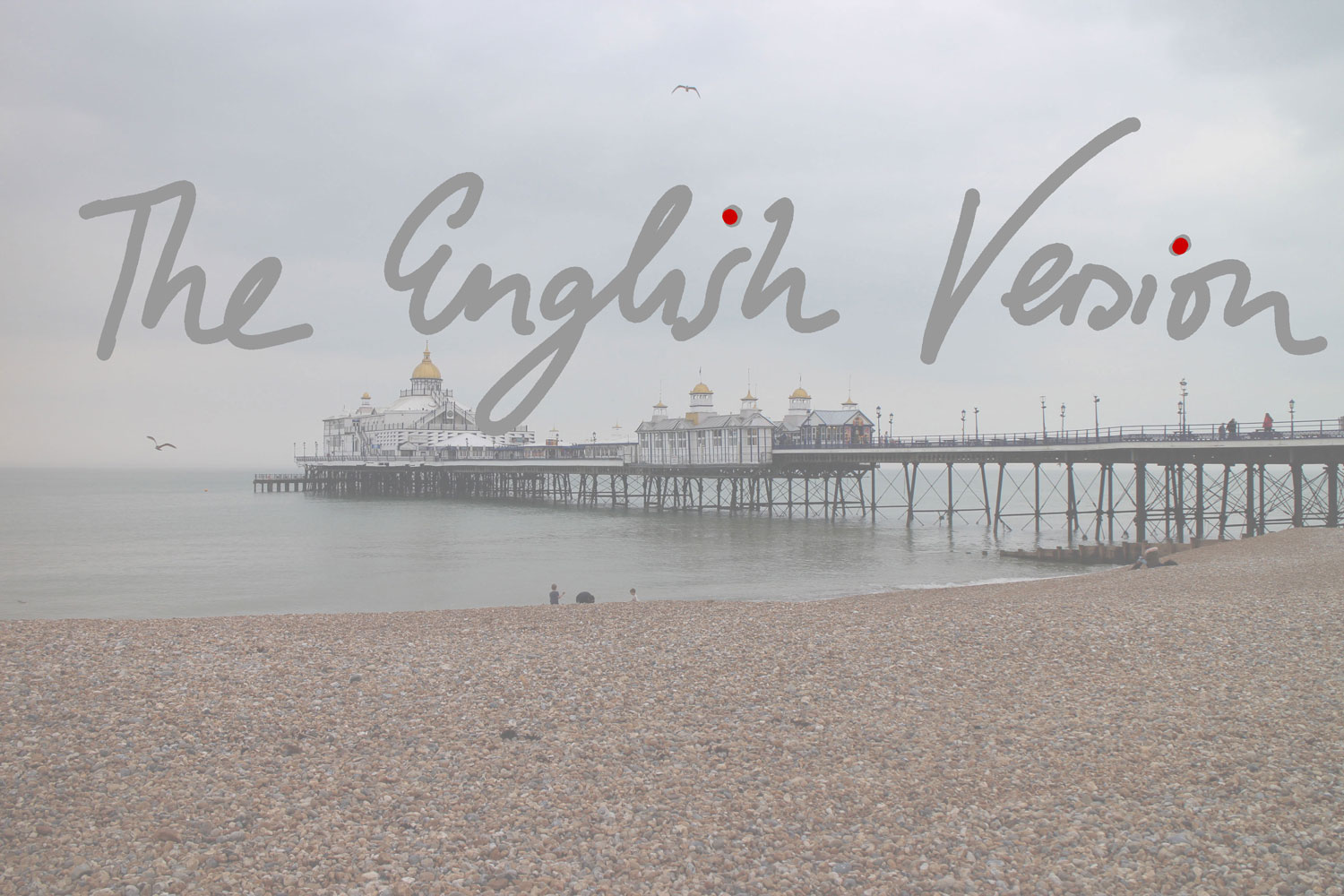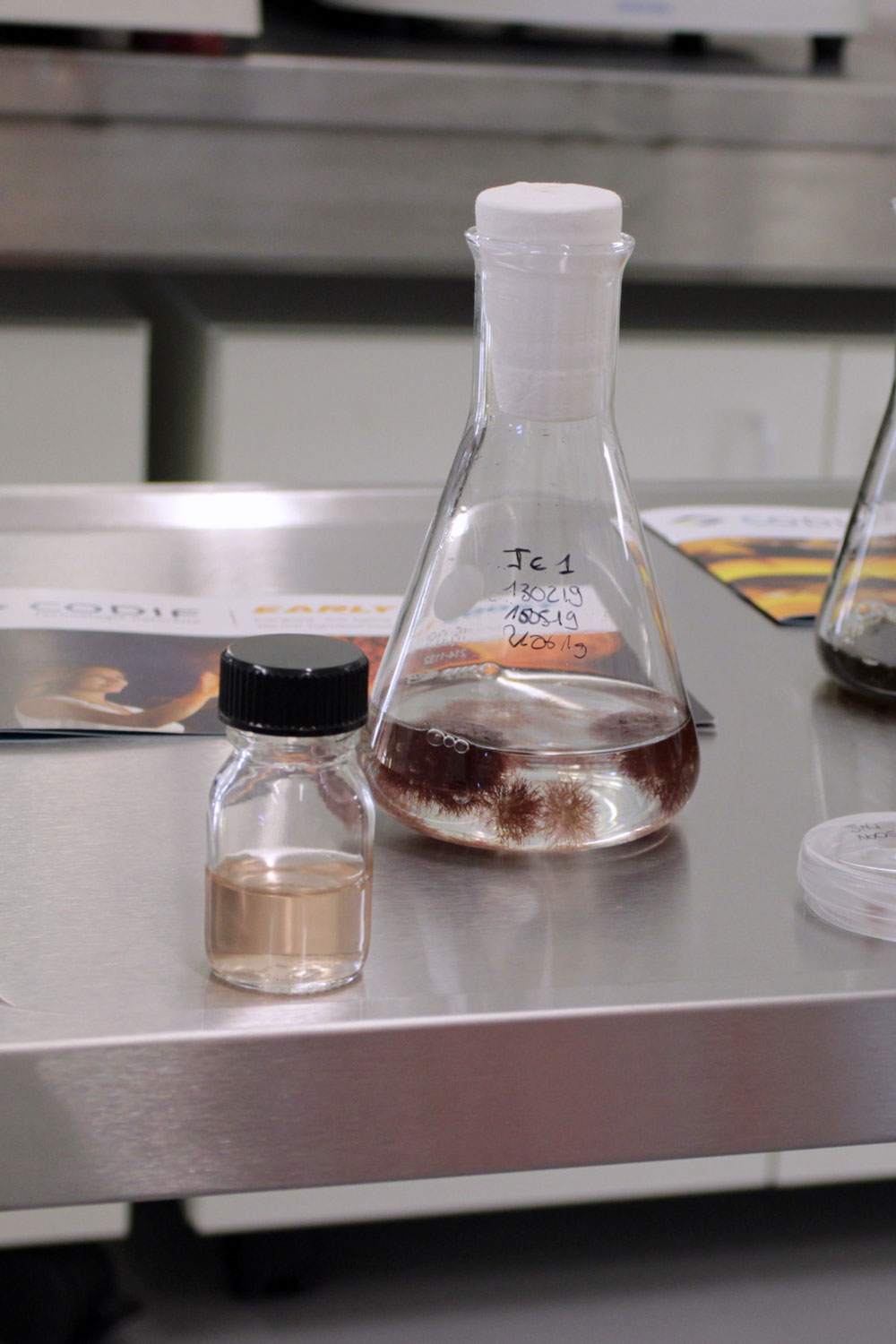This is a translation of my German blogpost Hinter den Beauty-Kulissen… ProTec Ingredia GmbH Proudly Presents: In die Welt der Jania rubens eintauchen. Enjoy!
In cooperation with Protec Ingredia // It all began in 2006 when a PhD student started working for marine active ingredients manufacturer Codif. The topic of this student’s doctoral thesis was the cultivation of the red alga Jania rubens. Today, the former student is responsible for the development of new raw ingredients at the Brittany-based company.
Eric Gasparotto’s research has been instrumental in shaping Codif’s direction and the Jania rubens has become a symbol for what the company does. Over the last decade, Codif has manufactured over a ton of the dried red algae – a milestone for the manufacturer! But the really interesting thing is that a single milligram of the alga plant formed the starting point for the entire cultivation process. In this new Chapter of my Beauty Soap, you can read all about how 1 milligram of plant matter turned into a billion milligrams of Jania rubens.
Why the Jania rubens is so interesting
When I was visiting Brittany I had the opportunity to meet Eric Gasparotto during a tour through Codif’s R&D division. When I asked him what his favourite marine plant was he immediately mentioned the Jania rubens. Swimming in water these pink-purple-coloured algae look like tiny decorative pompons: Their slender twigs grow in rounded bunches.
The red alga Jania rubens belongs to the Corallinaceae family and is around 2-4 cm in diameter. The plant’s body is calcified (which is why it’s also called calcified alga) and the Latin name perfectly describes what these algae look like: The word jania refers to the Roman god Janus with its double-faced head while rubens describes the reddish colour of this seaweed. If you look closely at the photo above you can see that the twigs of the algae always end in a dual branch.
For billions of years, algae like the Jania rubens developed efficient survival strategies to deal with stressful environmental situations such as dryness or UV exposure. Codif’s goal was to explore these properties and make them available for human use. After all, there’s still a tiny bit of alga in all of us: The evolution of plants and animals (including humans) began with algae. Even today, the structure of an alga membrane shows remarkable similarities to human skin.
How Codif is cultivating the Jania rubens
The Jania rubens is rather difficult to find in its natural environment – it likes to grow on rocks or even on other marine plants, and generally grows very slowly. Therefore wild harvesting of the algae was not an option as this would have depleted the natural resources too much. So Eric Gasparotto developed a method to cultivate the Jania rubens more sustainably, minimising negative effects on the environment as much as possible.
Codif was one of the first companies to attempt cultivating macroalgae. Like most microalgae, the Jania rubens are grown in pillared glas tanks (phyto bioreactors). This sounds much simpler than it actually is: If you want this kind of bioreactor cultivation to be successful you need to replicate the alga’s very specific natural environment. It took years before Eric managed to craft the ideal living situation for the calcified algae: They need sufficient light and movement and a suitable temperature to thrive. Today, the Jania rubens is so comfortable in Codif’s lab-based growth environment that it can be harvested after 2-3 months.
The special properties of Jania rubens
Eric is especially proud of the fact that his lab-grown algae have a much higher content of minerals and trace elements than calcified algae that grow in the open sea. As a comparison: The concentration of minerals and trace elements in the Jania rubens is already 20.000 to 40.000 times higher than that of seawater. These fluffy red algae have some really exciting cosmetic properties – they can hydrate, remineralise and protect the skin. Another advantage of the bioreactor cultivation is that Codif’s raw ingredients are always available in the same high quality and purity.
Active ingredients that are based on Jania rubens
After the Jania rubens has been harvested it is then further processed. You can manufacture several different actives from this alga. Depending on which extraction method is selected the result varies considerably in terms of ingredients and effects. The development of these extraction methods was a science in itself, by the way. Eric and his team needed many attempts until they succeeded in developing the most suitable processes to work on Jania rubens.
- Thanks to the detoxification of the mitochondria (which are the power plants of the cells) the active ingredient Actiporine 8G boosts collagen synthesis and smoothes the skin’s surface.
- It is also possible to manufacture plant-based taurine from the Jania rubens. This active rejuvenates the skin cells and boosts the formation of the energy molecule ATP (adenosine triphosphate). Codif uses this amino acid in its energising ingredient Early Boost, which helps the fibroblasts in the connective tissue to form collagen and elastin.
Sustainability
Because customer demand for the active ingredients manufactured from Jania rubens has been growing steadily, Codif is currently operating 48 massive glass tanks to cultivate sufficient amounts of algae. To relieve the pressure on its employees, the company is looking for ways to further automate the cultivation process and recently switched the tanks’ illumination to LEDs which significantly decreased energy consumption.
However, these operational changes also meant adjusting other parameters in the cultivation process of Jania rubens – the algae immediately notice every single change in their living environment. Codif is also working to reduce the usage of compressed air – a vital component in algae cultivation – in order to further save energy. These constant improvement processes have a high priority for the company.
Codif calls its approach to sustainable ingredient manufacturing Bioth-Ecology – click on the link for more information on the concept. Thanks to this special biotechnological method, the environmental impact is minimised as much as possible. This applies to natural resources – cultivating the algae in a lab means that you don’t need to source plant matter from nature – as well as to the entire production chain.
In Germany, Switzerland, The Netherlands and Austria, trade customers can order the marine ingredients of Codif through German distributor ProTec Ingredia.
© Photos 2 and 4 were provided to me by Codif for this blogpost.
The next chapter of our Beauty Story will focus on active ingredients that are suitable for all genders. Stay tuned!





